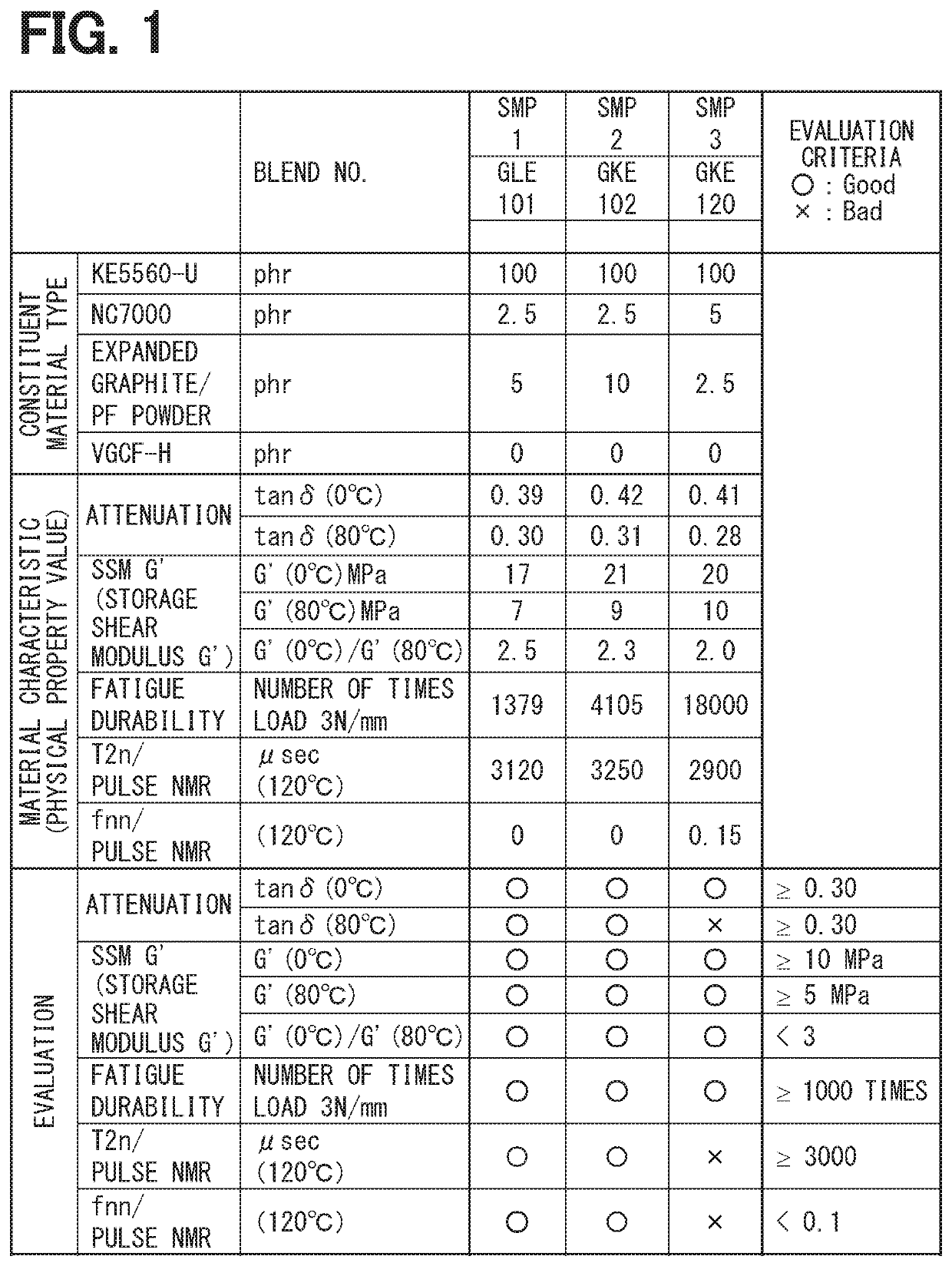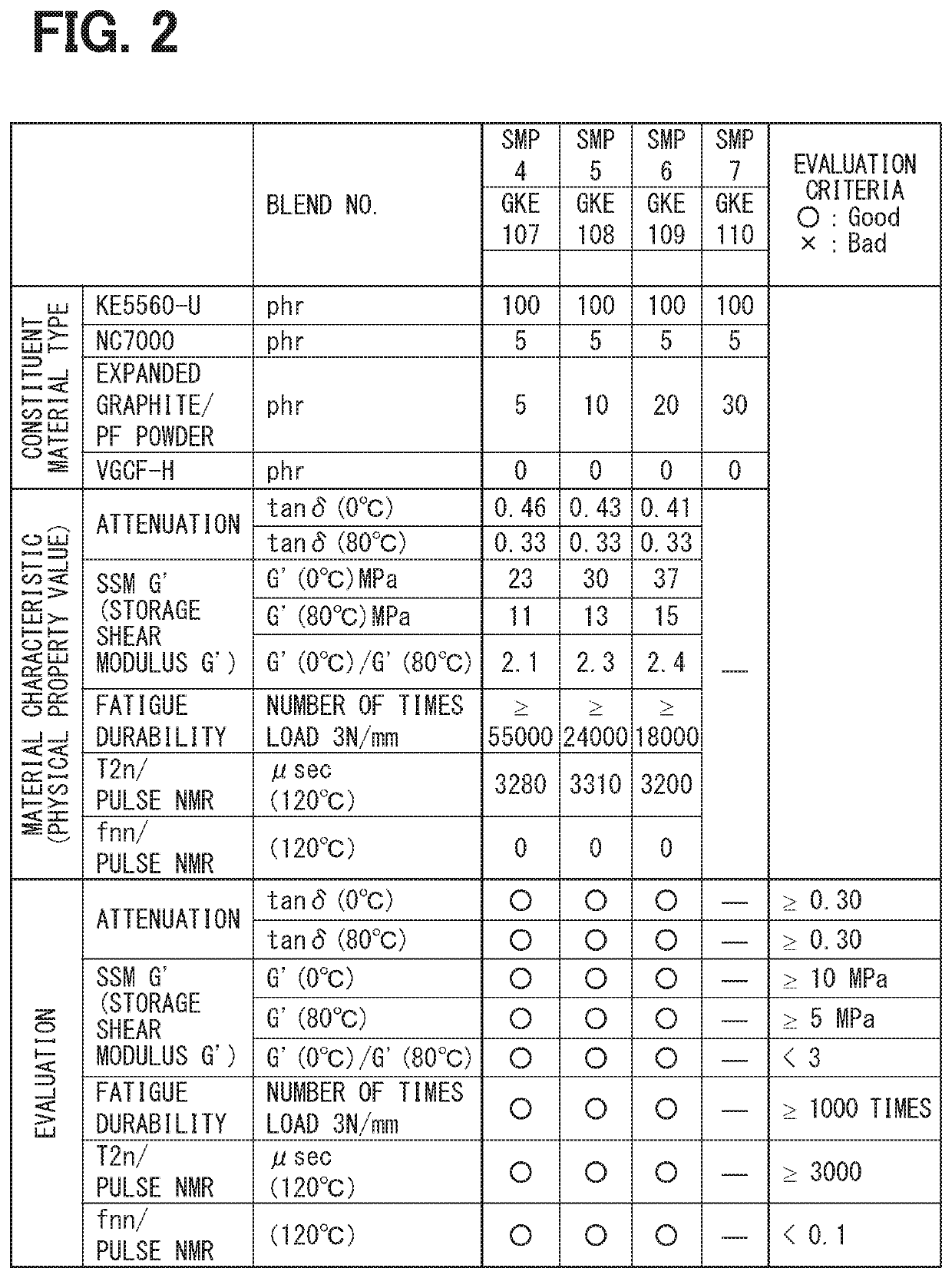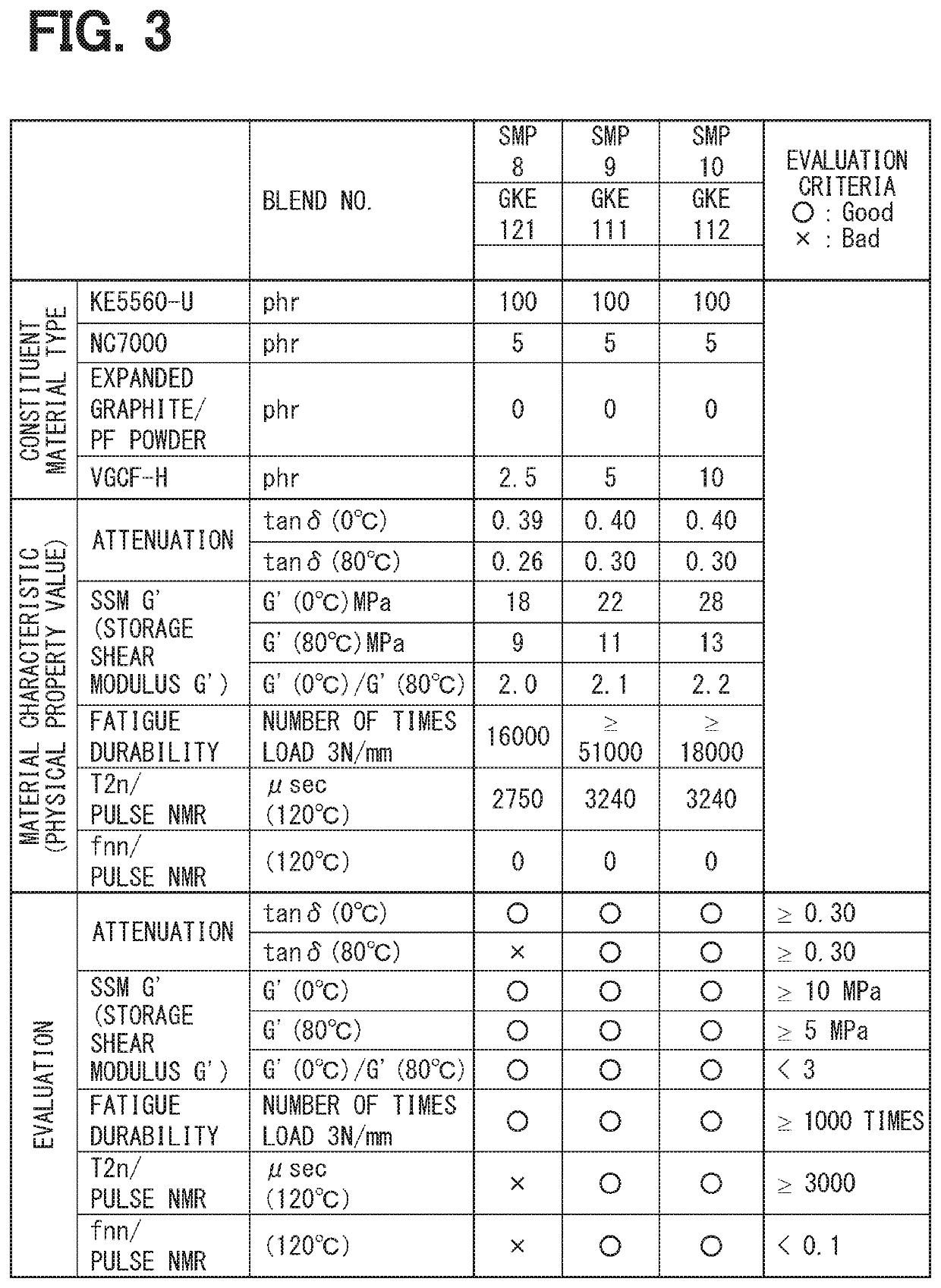Silicone rubber composite material and vibration isolating member
a composite material and silicon rubber technology, applied in the field of silicon rubber composite materials and vibration isolating members, can solve the problem of not being able to meet the required characteristic for at least one use expected of a composite material, and achieve the effect of small temperature dependence of loss tangent and elastic modulus, and high durability
- Summary
- Abstract
- Description
- Claims
- Application Information
AI Technical Summary
Benefits of technology
Problems solved by technology
Method used
Image
Examples
first embodiment
[0048]In this embodiment, a silicone rubber composite material comprises silicone rubber, carbon nanotubes (hereinafter, referred to as CNTs) having an average diameter of 30 nm or less, and graphite pieces. One example of the silicone rubber is silicone rubber KE-5560-U manufactured by Shin-Etsu Chemical Co., Ltd.
[0049]CNT has the nanosize effect. With regard to the nanosize effect, Patent Literature 8 is incorporated herein by reference. The CNTs having the nanosize effect is hereinafter referred to as first CNTs. The first CNTs have an average diameter capable of exhibiting the nanosize effect. The average diameter of the first CNTs may be not less than 1 nm and not more than 20 nms. An example of the first CNTs is NC7000 manufactured by Nanocyl.
[0050]The silicone rubber, the first CNTs, and the small graphite pieces are kneaded. With regard to kneading of these, Patent Literature 1 and Patent Literature 2 are incorporated herein by reference. These are elastic kneading methods u...
second embodiment
[0065]This embodiment comprises the silicone rubber, the first CNTs having an average diameter of 30 nm or less, and CNTs having an average diameter of more than 30 nm and not more than 1000 nm. This CNTs do not have the nanosize effect, but has the sliding effect of a surface area. This kind of CNTs is hereinafter referred to as second CNTs. Per 100 parts by weight of the silicone rubber, the first CNTs are 2.5 to 10 parts by weight (both inclusive). Per 100 parts by weight of the silicone rubber, the second CNTs are 5 to 15 parts by weigh (both inclusive). An example of the second CNTs is VGCF-H manufactured by Showa Denko K.K.
[0066]The graphite pieces of the first embodiment and also the second CNTs are fillers. These fillers generate friction between the polymers and the fillers in the silicone rubber composite material. However, attenuation mechanisms by the fillers, that is, ways of sliding, are different. The graphite pieces such as expanded graphite involve interlayer fricti...
application example 1
[0107]In FIG. 15, a vibration isolating member 10 is disposed between two members having different vibration states. The two members are, for example, a vibration source and a support member that supports the vibration source. The two members may be a vibration source and another member that is supported by the vibration source. The vibration isolating member 10 suppresses transmission of vibration between the two members. The vibration isolating member 10 absorbs the vibration to be transmitted. The vibration isolating member 10 suppresses vibration of any one of the two members.
[0108]The vibration isolating member 10 comprises a first fixing portion 11 fixed to one member and a second fixing portion 12 fixed to the other member. The first fixing portion 11 and the second fixing portion 12 are made of aluminum-based or iron-based metal. The vibration isolating member 10 comprises a silicone rubber composite material 13 disposed between the first fixing portion 11 and the second fix...
PUM
| Property | Measurement | Unit |
|---|---|---|
| diameter | aaaaa | aaaaa |
| diameter | aaaaa | aaaaa |
| spin-spin relaxation time | aaaaa | aaaaa |
Abstract
Description
Claims
Application Information
 Login to View More
Login to View More - R&D
- Intellectual Property
- Life Sciences
- Materials
- Tech Scout
- Unparalleled Data Quality
- Higher Quality Content
- 60% Fewer Hallucinations
Browse by: Latest US Patents, China's latest patents, Technical Efficacy Thesaurus, Application Domain, Technology Topic, Popular Technical Reports.
© 2025 PatSnap. All rights reserved.Legal|Privacy policy|Modern Slavery Act Transparency Statement|Sitemap|About US| Contact US: help@patsnap.com



